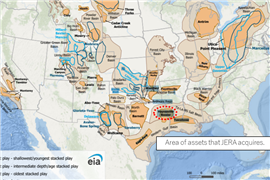Major Carbon storage project moves forward
December 10, 2024
Denmark’s Greensand Future initiative reaches FID

The Greensand Future project, a joint initiative by INEOS, Harbour Energy, and Nordsøfonden, has secured its Final Investment Decision (FID), marking the official start of the first full-scale CO2 storage facility in the European Union, the companies said.
The project will be built in the North Sea, specifically in a depleted oil field operated by INEOS. Storage operations are expected to begin at the end of 2025 or early 2026, with an initial capacity to store 400,000 tonnes of CO2 per year. The development of Greensand Future would help achieve the European Union’s target of capturing and storing 250 million tonnes of CO2 annually by 2040, a key part of meeting the ambitious climate goals set by the Paris Agreement.
A $150 Million Investment to Combat Climate Change
The companies said the Greensand Future project is poised to attract more than US$150 million in investments across its entire value chain, from CO2 capture to transportation, logistics, and storage. With the ability to gradually expand its storage capacity, Greensand Future is positioned to store up to 8 million tonnes of CO2 per year by 2030.
The project is designed to be a scalable solution that can accommodate increasing volumes of CO2 from various emitters, including those in Denmark, the broader European Union, and beyond. The project’s modular nature allows it to serve as a model for similar offshore and onshore CCS ventures worldwide, further driving the global deployment of carbon capture technologies, the companies said.
A Vision for a Sustainable Future
Sir Jim Ratcliffe, Chairman of INEOS, emphasized the importance of this breakthrough for both environmental and economic sustainability. “Greensand Carbon Storage is a far better way to decarbonize Europe than deindustrialize. That just moves the problem elsewhere, doesn’t solve it, and destroys jobs. Our investment in Greensand helps secure a sustainable future for both the planet and the economy,” Ratcliffe said.
According to INEOS, the project will help meet the EU’s climate targets by providing a safe and permanent storage solution for CO2 emissions from major industrial emitters. The facility also represents a tangible example of how existing infrastructure, such as depleted oil fields, can be repurposed for climate action, making it an efficient and sustainable solution to global emissions.
Transforming the North Sea into a Climate Solution
The CO2 captured for storage in the first phase of Greensand Future will primarily come from Danish biomethane production plants. Once captured and liquefied, the CO2 will be transported via the port of Esbjerg, where it will be shipped to the Nini field in the North Sea by Royal Wagenborg. There, it will be injected into the reservoir, located 1,800 meters below the seabed, where it will be stored permanently.
This method of offshore CO2 storage builds upon the success of the pilot phase of the Greensand project, which achieved a world-first in March 2023. The pilot, which was the first cross-border offshore CO2 storage project, successfully demonstrated the full CCS value chain from capture and transport to storage.
Mads Gade, Head of Denmark at INEOS Energy, reflected on the achievement, noting, “Last year we were the first in the world to succeed in developing a value chain for safe and efficient capture, transport, and storage of CO2 across national borders. Now we are proud to take the next step, building on the learnings from the pilot and aiming to deliver a fully operational commercial project by the end of 2025/early 2026.”
Independent Verification of Safety and Effectiveness
The success of Greensand’s pilot phase has been independently verified by DNV, a global leader in risk management, verification, and standardization. This third-party validation ensures that the CO2 stored in the Nini West reservoir will remain safely sequestered for the long term, confirming the project’s potential as a reliable and effective method for reducing emissions, the companies said. The verification process also provides confidence that large quantities of CO2 can be securely stored underground, contributing to the fight against climate change.
“Greensand has a well-functioning storage system, where large amounts of CO2 that would otherwise have been emitted into the atmosphere can be safely stored,” said Gade. This documentation and verification are critical to ensuring the integrity and permanence of the storage solution, which will be vital as the project scales up in the coming years.
In addition to offshore CCS, INEOS, Harbour Energy, and Nordsøfonden are also exploring the potential for underground CO2 storage on land in Denmark. Earlier this year, the Danish Minister for Climate, Energy, and Utilities granted the partnership an exploration license for the Gassum reservoir in Jutland, where they will assess the feasibility of safely storing CO2 underground. The experience gained from the offshore Greensand project will inform the development of land-based storage solutions, further enhancing Denmark’s ability to store carbon and support its ambitious net-zero goals.
Nordsøfonden, the Danish state company responsible for managing the country’s subsurface resources, is also playing a key role in the success of the Greensand project. Nordsøfonden’s dual mission includes both the production of energy and raw materials and the reduction of emissions through carbon storage. By serving as the state participant in all carbon storage licenses, the company is ensuring that Denmark maximizes the potential of its subsurface resources while contributing to the global fight against climate change.
The Greensand Future project is a pivotal moment for Denmark and Europe as a whole. It demonstrates how innovative partnerships and advanced technology can combine to deliver practical solutions for climate change. By establishing the first commercial-scale CCS facility in the EU, Greensand Future is setting a benchmark for other carbon storage projects worldwide, helping to drive the large-scale deployment of CCS technologies needed to meet global emissions targets.
With the FID now in place, all eyes will be on Denmark as the project moves toward its operational phase, with the goal of capturing and safely storing millions of tonnes of CO2 every year. As Mads Gade succinctly put it, “With Greensand Future, we are sending an important message to Danish and European emitters: it can be done.”
MAGAZINE
NEWSLETTER

CONNECT WITH THE TEAM









